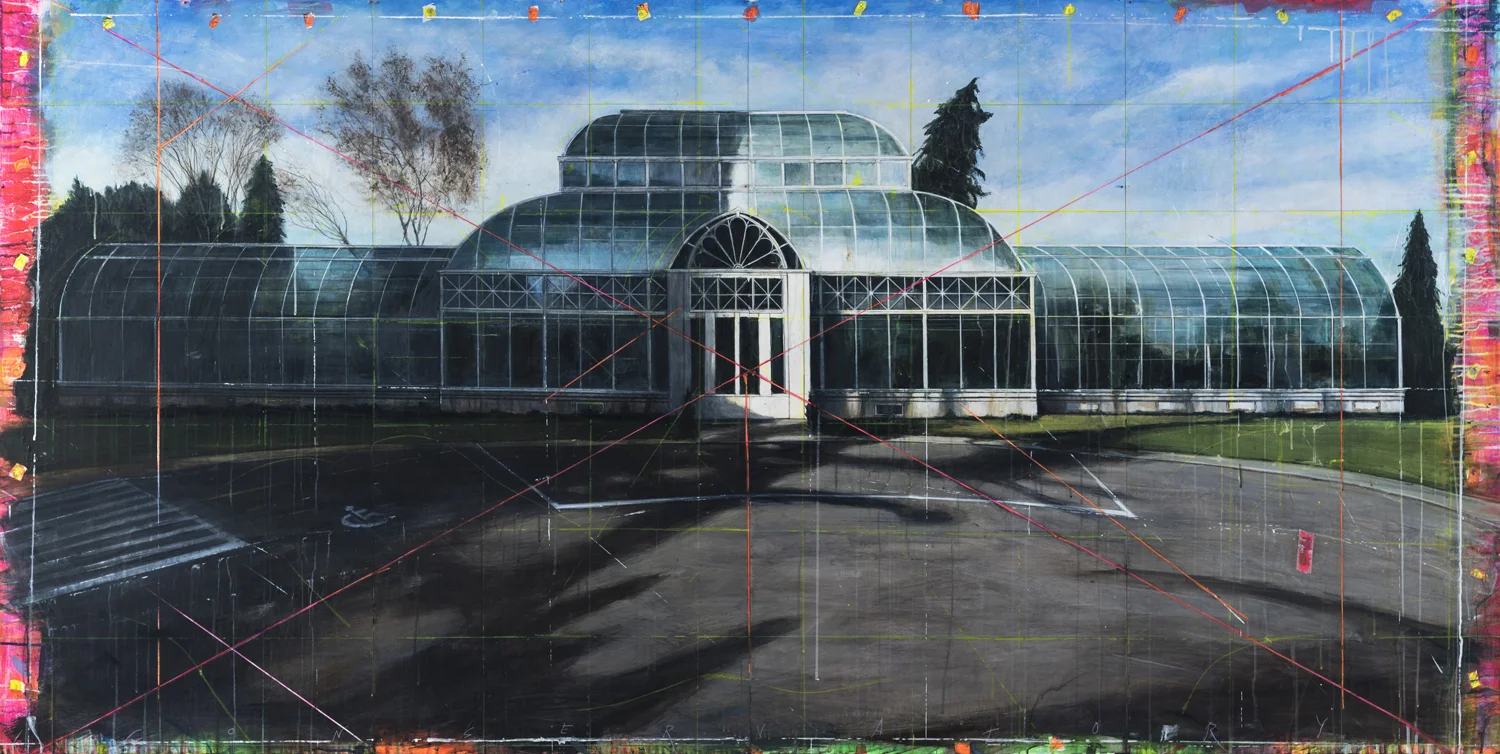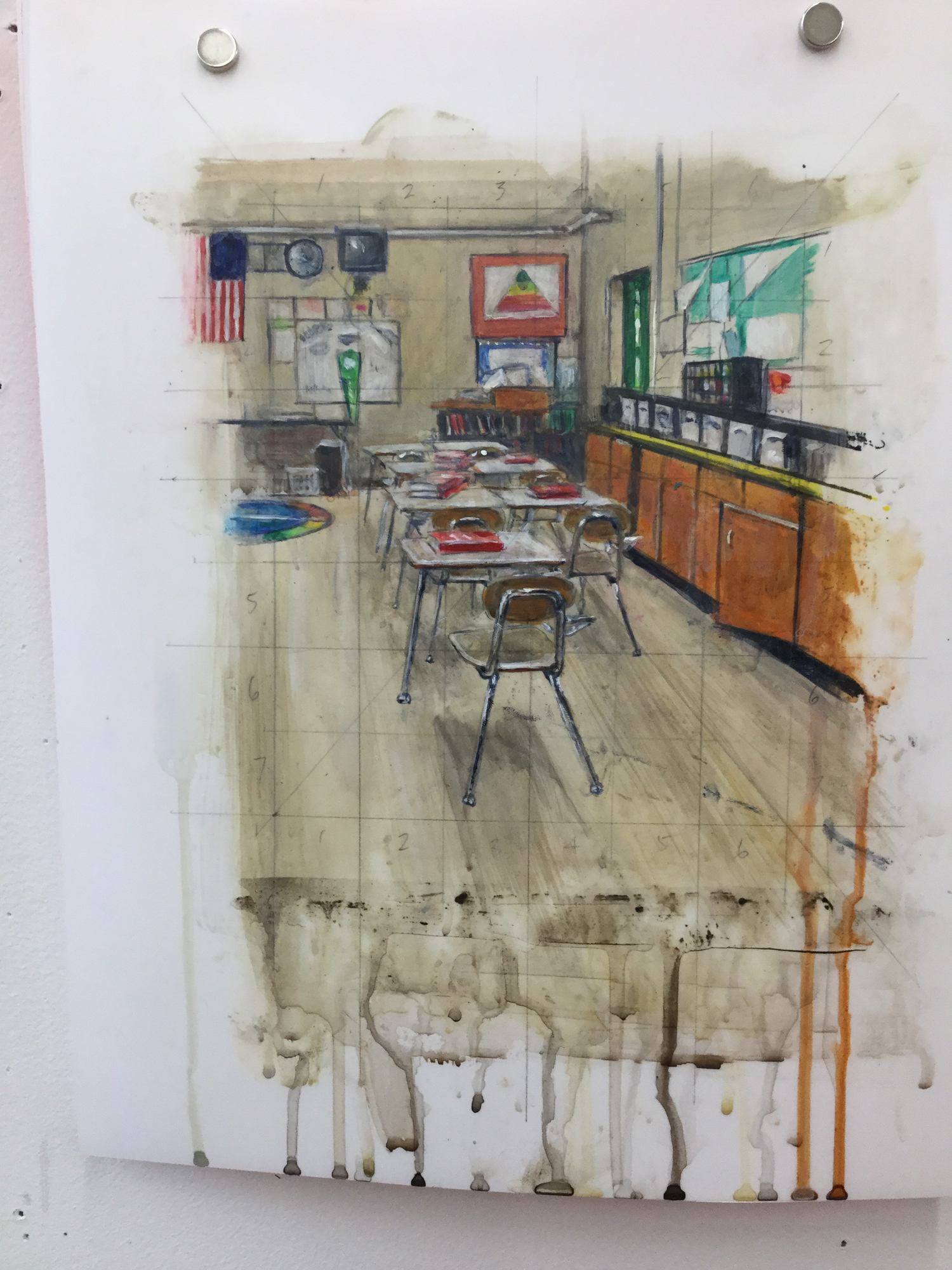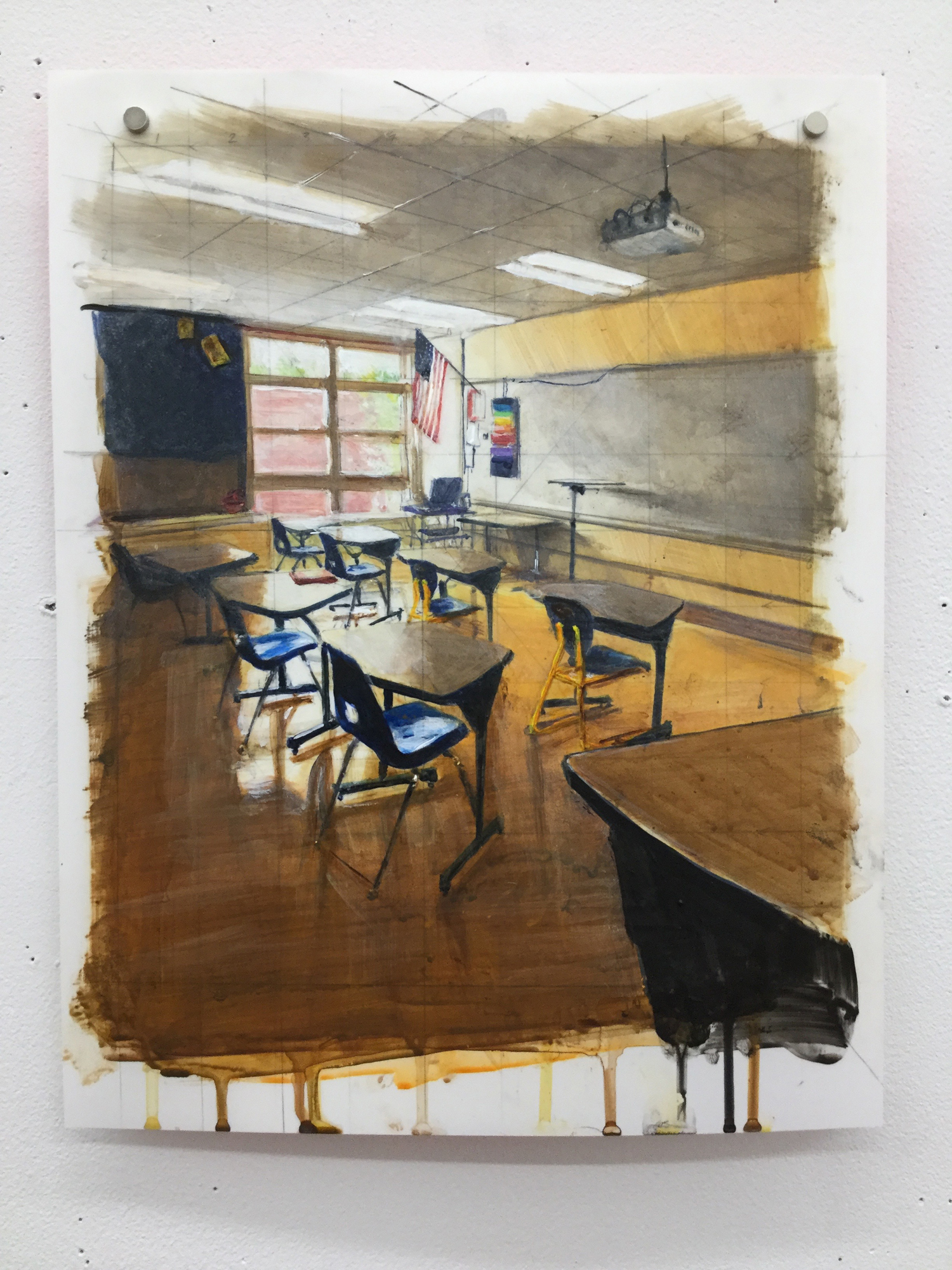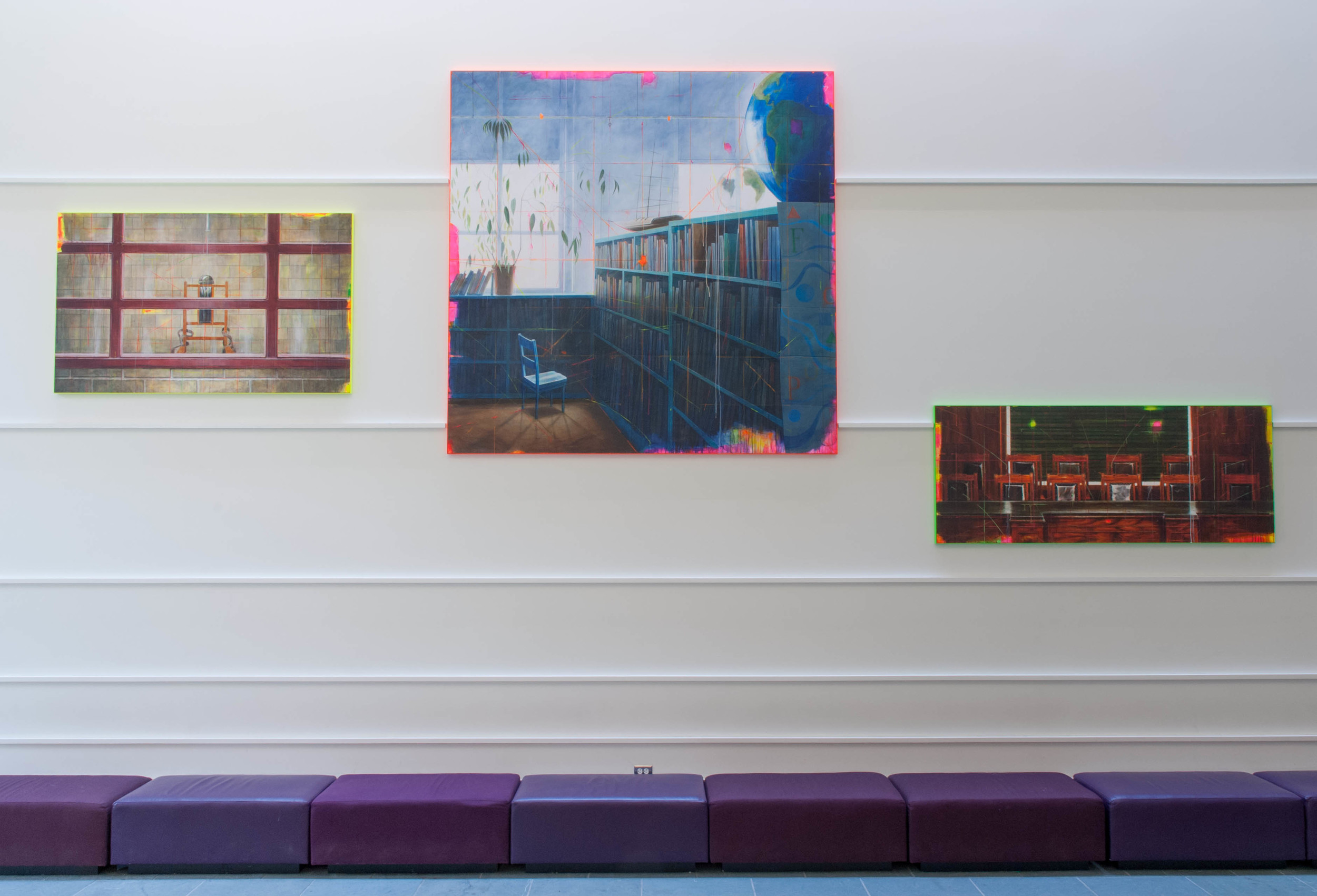All works: 11x 14 inches, acrylic on Yupo translucent polypropylene
The overall theme of this series of small works or studies is institutional seating or the often flock-like directional arrangements of chairs or desks in the architecture of primary and secondary schools in the United States (as the presence of the national flag in many of these interiors will attest to). So far, the series shows schools that I have visited near my home and studio in central Connecticut, but certainly these interiors are generic and could be anywhere in the country. In fact, the seating design and the classrooms themselves have not changed since 1962 when I was 12 years old. Prior to that I seem to remember being seated in old school wooden desks with empty inkwells and much time-worn, engraved graffiti, remnants going back to my grandparents and beyond. The good old days of reading, writing, and arithmetic, taught to the rule of the hickory stick.
The iconic empty chair, built for the human anatomy, has long epitomized my work as a painter interested in the passage of people through architecture. The empty chair represents the haunting, invisible human presence of the past and future. Children have been, or will be, seated in classrooms for the primary reason of learning, and the arrangement of the chairs or desks is also intended for attention, direction, and group control. But these concerns can be overridden, as most of us will recall, by boredom and the question arises: who owns the politics of boredom? Who sits in the chairs and who is in front looking back at them? Who is decorating these spaces? Some seem to have an overkill of visual stimulation; others seem completely dry of any aesthetic at all. The only constant in each seems to be the flag.
Like my past work, I have chosen this theme for personal and social reasons. Childhood dyslexia and my fear of being called upon to answer or read aloud made the school experience a difficult one for me. Entering classrooms, some uncannily like the ones I now depict, triggered instant anxiety and still does. I liked the socialization provided by school, observing and interacting with all the various characters seated in the desks as well as the adult in charge in front, but I did not like the learning part of the equation. I liked to draw and paint and I liked to make maps in geography class and that was about it.
But schools and classrooms now unfortunately connote other things in our society. Aside from the general debate on how best to educate in what appears to be an overloaded and perhaps even failing system; too often terrible events, i.e. mass shootings, have occurred. Knowledge of this can effect how these pictures are viewed. I can only imagine what the survivor or first responder to one of these horrific events would take away from the generic, benign, or innocent, empty classroom interiors I have rendered in “School Studies”.




























































































































































